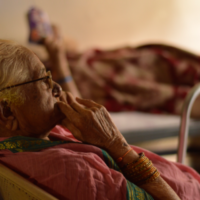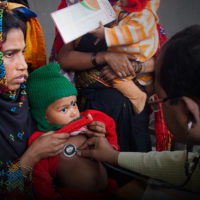INTERNATIONAL Women’s Day has been observed for over 100 years around the world. Since the last one a year ago, there have been a lot of key achievements and breakthroughs in the overall women’s movement.
They include:
- Changes to an archaic rape law in Lebanon that no longer exempts a rapist from punishment if he marries his victim
- Lifting the total ban on abortion in Chile, now allowing abortion when a woman’s life is in danger, when the foetus is not viable and when the pregnancy is a result of rape
- The #MeToo movement, and so much more!
While many achievements gain worldwide recognition, we should also honour the lesser known ones of women who have been working at a grassroots level over the past years. Here are four incredible stories of change and female change-makers from India:
1. The Women of Sathyamangalam
The villages around Sathyamangalam, Tamil Nadu have seen a history of unequal treatment, especially towards women, Dalits and the disabled population. That is, until NGO Aide et Action International, in 2012, approached women in the community to attend a powerful three-day filmmaking workshop to learn how to use the medium to tell stories.
Since then, the women, who previously rarely had their voices heard, have been trained to produce, film and direct short films so they can tell theirs and others’ stories of oppression. Films have been made on subjects such as child labour, women’s rights, rights of people with disabilities and caste discrimination, and screened in their villages for the public.
Seeing the positive effects the power of visual media has had on creating awareness and change, the women have continued to train others in filmmaking so more can be made and the movement continues.
2. Zainab Khan
The main livelihoods activity in the village of Chandora in Meerut, Uttar Pradesh has been stitching footballs, something Zainab too did as a child to contribute to her family’s meagre income. She wasn’t the only 10-year-old child labour candidate in her village but unlike most others her age, Zainab’s father also ensured she went to school and got an education.
In 2006, Zainab realised her life’s purpose when the child rights movement, Bachpan Bachao Andolan, visited her village to encourage community members to not let their children engage in child labour. As a part of their work, when Zainab was elected as head of the Bal Panchayat (children’s council), she worked with her community and surrounding villages to raise awareness on the importance of education and encouraged families to send their children to school.
Zainab was able to convince the then chief minister of Uttar Pradesh Akhilesh Yadav to build a higher secondary school in their village – and as of 2015, not a single child in Chandora is illiterate!
3. Nauroti Devi

Belonging to a poor Dalit family in the village of Harmada in Rajasthan, Nauroti worked as a stone cutter on road construction sites. She and her fellow workers were regularly underpaid until she decided to take action.
This 76-year-old mobilised other stone cutters and began campaigning for minimum wage and protesting against unequal pay between her female and male co-workers. Despite having had no education or financial resources, Nauroti was able to take the case to the Supreme Court and win! After educating herself and learning computer basics, Nauroti decided to teach other women and children from her community.
In 2010, Nauroti was elected as Sarpanch of her village during which she worked on bringing proper housing and toilets to her community, and reacquired land for a government health centre. Amazing achievement by a poor Dalit woman in a patriarchal society!
4. Malati Murmu
Although linguistically diverse, not many languages and dialects are represented in mainstream Indian society. This is especially true for Adivasi and tribal toungues such as Santali, whose speakers have been historically marginalised.
Malati, from the Mayurbhanj district of Odisha, who was educated in Santali wanted to change this. She believed that the Santal community needed something to connect them to each other and their language on a regular basis. Although plenty of magazines and literature in Santali exists, there was no newspaper.
With the help of community members, Malati launched Fagun in 2008 and is its editor and publisher. Today, Fagun is distributed across the country, from Delhi to Assam to Kerala and the Andaman & Nicobar Islands. Not only is Fagun helping preserve the Santali language, but is connecting Santals to each other and their culture.
Mark this International Woman’s Day by helping free 50 women from slavery.
Discover more from give.do
Subscribe to get the latest posts to your email.


